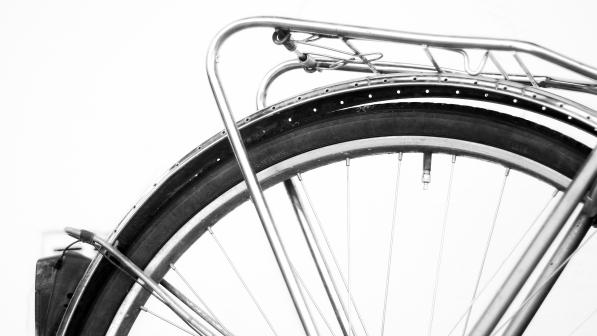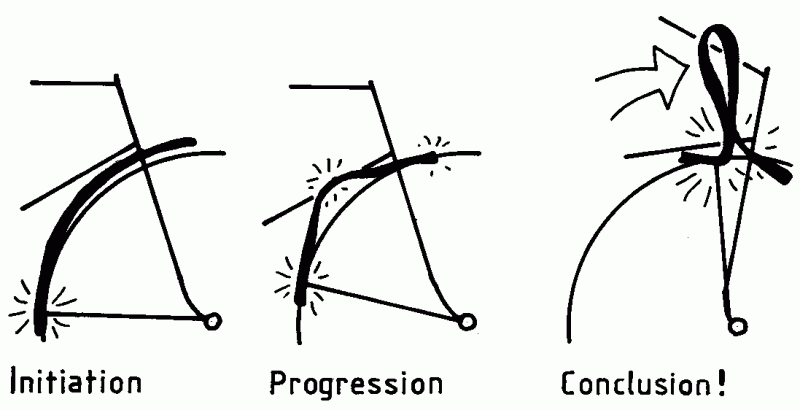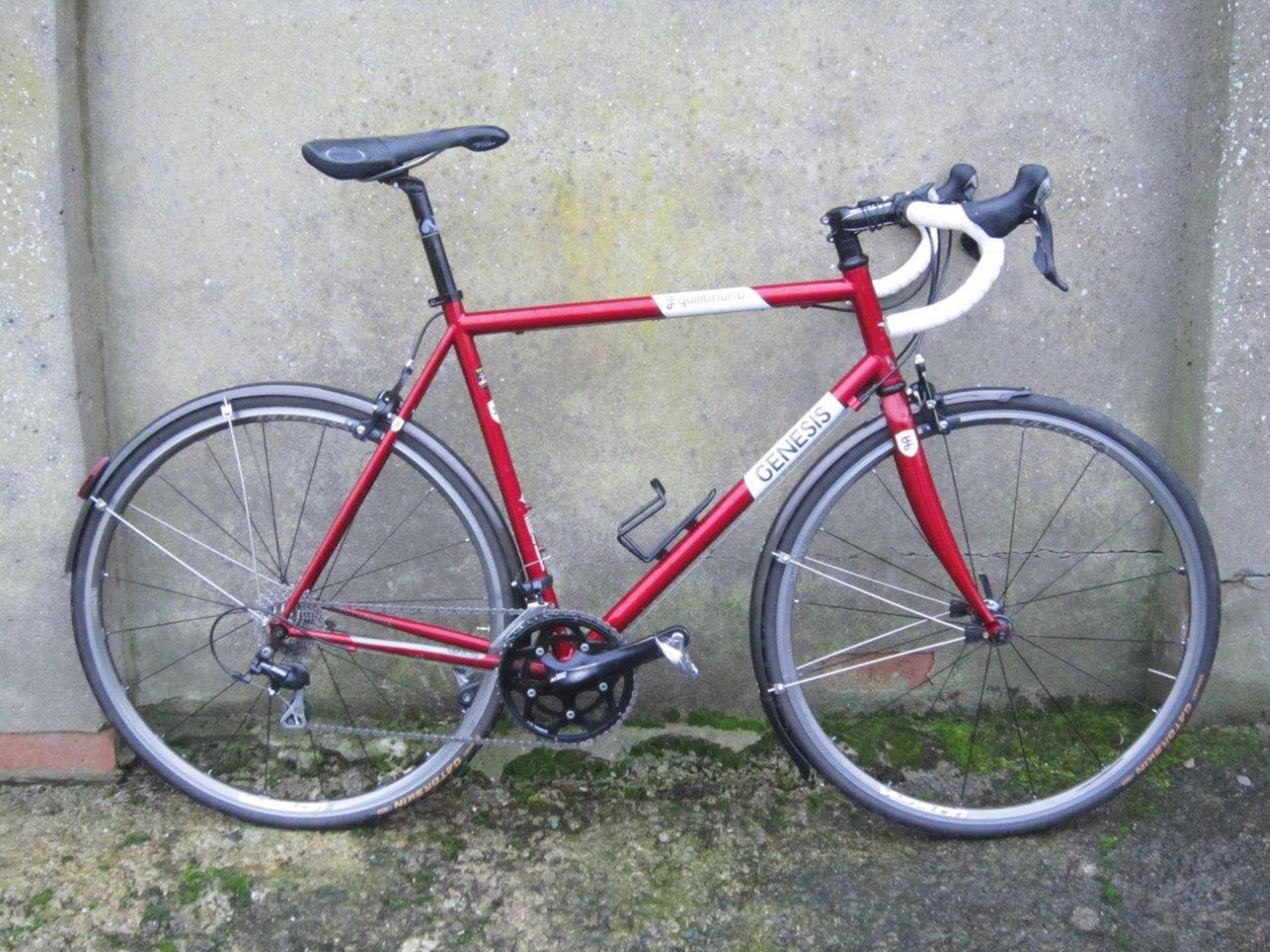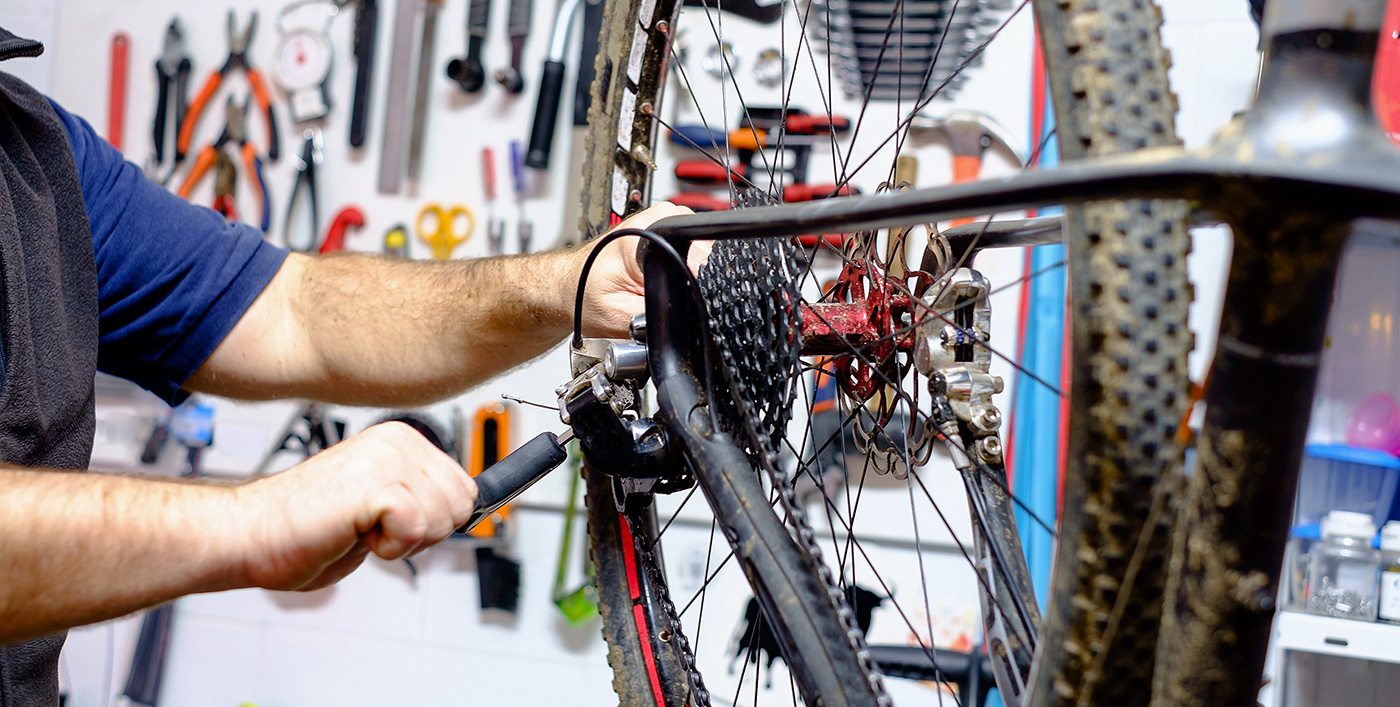Mudguard Safety

I wouldn’t let that scary opening dissuade you from fitting mudguards at all – provided your bike has space for them (which cannot be taken for granted these days – even when the bike comes with mudguard eyes!). Mudguards are essential for comfortable cycling in a damp climate. They never used to be dangerous and don’t have to be nowadays. You simply need to be aware of what could happen and make sure that your mudguards are fitted safely. Because unfortunately: the bike trade does not always get it right.
I first wrote about the danger of mudguard collapse, along with various other front wheel hazards, in a 1986 article in Cycletouring (as Cycle was then known) entitled ‘When Everything Stops!’ I highlighted it again with a paragraph on ‘Killer mudguards’ in a 1991 article on the British Standards for new bikes. I invited members to report any incidents. And they did. I received descriptions of 14 accidents, ranging from cuts and bruises to “the first thing I knew about it was when I woke up in bed the next day”! I analysed these reports and suggested how to avoid trouble in a three-page article on ‘Mudguard Safety’ in the Jun/Jul 1992 issue of Cycletouring & Campaigning.
Mudguards don’t seem to have been much of a problem until the 1980s and 90s. I identified three key factors in the apparent increase in this kind of accident at that time.
- New laminated plastic mudguards were much tougher than old brittle plastics, which shattered into harmless pieces rather than fold up and stuff themselves under the fork crown! And metal mudguards had become thinner and flatter, for a more sleek appearance, a style which unfortunately makes them much less stiff than the deeply curved metal guards of yore, so they too offer little circumferential resistance to the intrusion of a foreign object (or the rider’s toe nudging guard against tyre). Once caught, the guard and its stays travel round with the tyre, about a quarter turn of the wheel, until stopped by the fork.
- Mudguard stays were also no longer attached to separate brackets partway up the forks, but to the very ends of the fork. This shifted the centre about which the stay rotates once caught by the wheel, in such a way that if it should begin to rotate, the part of the guard to which the stay is attached, rather than swinging up and away to release the incipient jam, is drawn ever more tightly down onto the tyre as it approaches the fork crown.
- After the 1960s, cycling became a disparaged means of travel and transport in English-speaking countries and perhaps in an attempt to escape the social stigma of using a bike for such purposes, people adopted designs of bicycle that were increasingly influenced by cycle sport. Racers, of course, don’t have mudguards, so bikes were sold without any and whilst salesmen would assure customers that they could be fitted, the available space between not only tyre and frame but also tyre and toe, reduced to the point where it became much more likely that an object small enough to be picked up by the tyre might entirely fill the remaining gap, or that the rider might inadvertently kick the guard into the tyre.

The miraculous ability of new plastic materials to recover their shape left several correspondents initially at a loss to understand what on earth had thrown them from the bicycle! Only when they saw that the front mudguard was somewhat kinked and twisted, with new scratches in the paint at the top of the forks, did they realise what must have happened! Even when the guard was broken, it may seem more plausible that this apparently flimsy accessory was simply broken in the resulting tumble, than have caused it! Cyclists are commonly supposed to ‘just fall off’. Dead men tell no tales! And crashed bikes are seldom examined by anyone who knows mudguards can do this. So I would suggest that many more people have suffered such accidents than we shall ever know.
Perhaps word was spreading via CTC’s international membership, but cyclists were obviously suffering similar accidents in other countries. In July 1992 an article ‘Fly Biker Fly’ appeared in the July issue of Radfahren – a German magazine.
In contrast to the British road safety establishment and cycle trade, who remained in denial of all I had written about this for the past 6 years, the German manufacturer ESGE and German safety experts took the matter seriously. ESGE quickly developed safety-release fittings for front mudguards, called Secu-Clips. I drew attention to the importance of fitting these in a short article on Mudguard safety in September 1995. SKS followed with their ASR (Automatic Stay Release) reported in Cycle (touring & campaigning) of Jan 1997. Here's a nice animation showing how it works to keep you safe:
[video: http://www.youtube.com/watch?v=lGwG%2DqItnC8]
I could not get BSI to take this potentially lethal danger seriously. Meanwhile Germany made it illegal to sell a bike where the front mudguard could jam the wheel. I have my reservations about the eventual form this requirement has taken in the European Standard EN14764 (clause 4.12) but it’s certainly better than nothing and this has now replaced the relevant British Standard.
A lot of cycle manufacturers sidestep the issue by selling bikes without mudguards fitted already, even when those bikes are clearly intended for travel and transport use, rather than sport. They leave mudguards to the ‘after market’ where anything goes! However I guess that if you had mudguards fitted by a shop, were injured by them in the manner the EN14764 test is intended to reveal, and could show that this design of mudguard, as fitted, repeatedly fails that test, you may have a case against the shop for negligence in introducing a source of danger that is not permitted on a new bike.
But corporate amnesia is endemic to the cycle industry - especially when it comes to stuff racers don't use! So I’ve followed up with reminders from time to time (such as this Q&A from 1997). And in 2008 the French eventually admitted that there might even be a problem with their beloved garde-boue Salmon!





